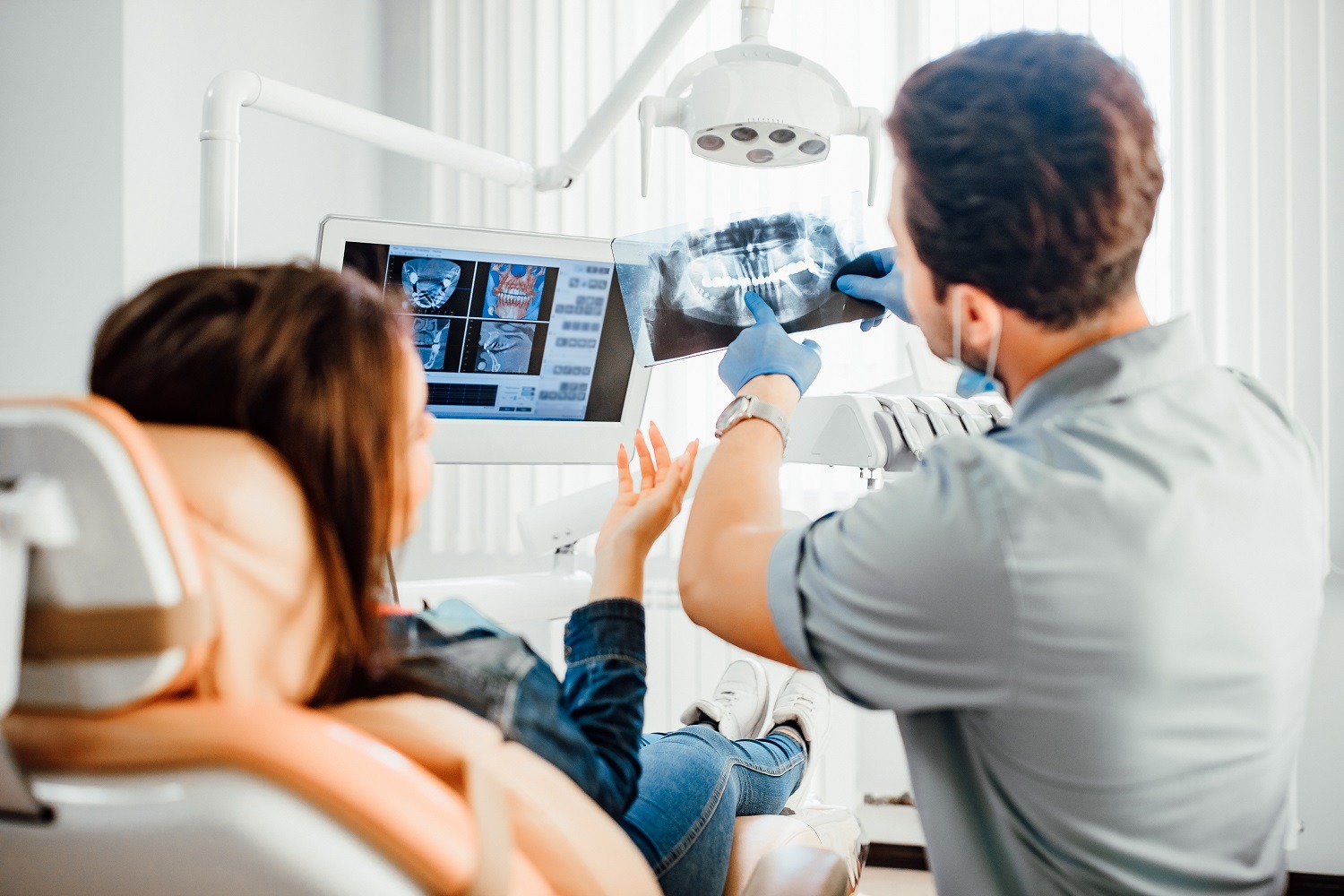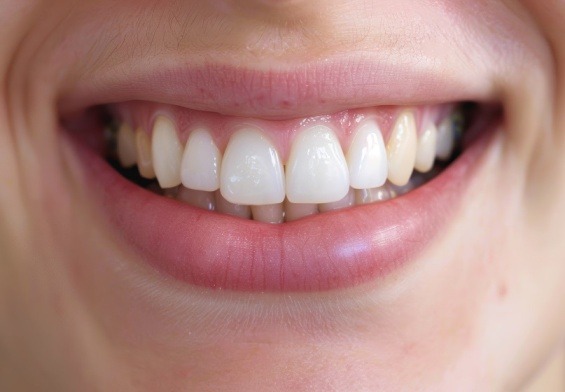What Makes a Dentist the “Best” in 2025?
The best dentist in NJ is a coveted title. Most people imagine they would have tons of experience, credentials, and patient reviews. They do, but some emerging new technologies like AI and 3D are joining the party and stirring the pot in 2025.
Today’s top dentists are skilled and tech-savvy. They use the latest digital tools to diagnose problems faster, deliver more precise treatments, and improve the patient experiences in general.
Fillings and cleanings are now the bare minimum from NJ’s top dentists. Artificial intelligence (AI) and 3D technologies make modern dentistry really sing. They raise the standard of care while making visits more efficient and comfortable.
How AI Is Changing Dental Diagnostics in NJ
AI may sound futuristic, but it’s already changing routine dental checkups across New Jersey. One powerful use is in diagnostic imaging. AI software analyzes X-rays and 3D scans quickly and precisely.
Often, these tools detect signs of decay, infection, or oral cancers that human eyes might miss. Machine learning algorithms get fed thousands of dental images. Over time, they learn to recognize subtle patterns that show early gum disease, bone loss, or problems under crowns.
So, this helps dentists catch issues early and plan smarter treatments. It also helps avoid unnecessary procedures.
Many top dentists in NJ now use AI-powered tools to:
- Distinguish between cavities and harmless shadows
- Flag potential oral lesions for biopsy
- Track bone density over time
Beyond imaging, AI also helps with predictive analytics to assess your risk for future dental problems. They look at treatment history, genetic markers, lifestyle, and other data.
These models can also help detect risk factors for chronic conditions like TMJ disorder before symptoms become disruptive. To learn more, here’s a deeper look at whether a dentist can treat TMJ. Dentists can use that information to fuel personalized care plans and improve long-term results.
The Rise of 3D Printing and Digital Restorations
Another major change in NJ dental offices is the move toward 3D-printed restorations. Gone are the days of uncomfortable molds. No more waiting weeks for dental labs to make crowns or bridges.
With today’s CAD/CAM systems, dentists can scan your teeth digitally, then design precise restorations on-screen. In-office 3D printers are then used to produce them in a single visit.
This technology makes it easier and faster to create:
- Crowns that fit perfectly
- Natural-looking veneers
- Long-lasting dental bridges
- Implant-supported restorations
Furthermore, 3D printing works with more than hard materials. Experimental procedures now use 3D bioprinting to regrow gum tissue or bone around teeth. While these techniques are still developing, they point to an exciting future.
Soon, damaged oral tissue might be rebuilt with patient-specific precision.
Digital design and 3D printing also help cosmetic dentists achieve lifelike results with fewer office visits. If you’re wondering whether it’s time to explore your options, read up on when you should see NJ cosmetic dentists.
Why Digital Dentistry Means Better Visits for Patients
For most patients, dental visits are something to endure. Digital tools are changing that by making appointments smoother, improving communication and reducing discomfort.
Technologies like AI, intraoral scanners, and real-time 3D imaging make care faster and clearer. They’re also easier to understand.
Practices that use AI and 3D tech can:
- Reduce waiting time with faster diagnostics
- Eliminate repeat visits for adjustments
- Improve comfort by avoiding messy impression trays
- Show real-time scans that help patients see treatment plans
AI also makes patient engagement easier in practical ways. Chatbots can answer basic insurance questions, explain pre-visit instructions and help nervous patients feel prepared.
Meanwhile, automated scheduling and smart reminders reduce human error and missed appointments. This saves time for both patients and staff.
On the backend, predictive software helps practices spot scheduling patterns. It identifies peak hours, frequent cancellations, and seasonal slowdowns. Practices can then adjust accordingly.
That means fewer delays, more available time slots, and better office flow. These changes may seem small, but they make up more than the sum of their parts. That sum results in smoother, more efficient, and more transparent dental care.
Digital tools are also helping patients better understand what to expect after cosmetic procedures. If you’ve recently had a whitening treatment, here’s a guide on what you should eat after teeth whitening in New Jersey to protect your results.
Safety, Privacy, and Trust
Any new technology raises questions about privacy and safety. Can patients trust AI with sensitive dental data? What if the software makes mistakes?
The top dentists in NJ understand these concerns. They take steps to address them by combining modern tools with thoughtful safeguards. Patient trust also remains an unwavering commitment.
Here’s how they do it:
- Data protection: AI systems are only as secure as their networks. Top dental practices use encrypted, HIPAA-compliant platforms. This ensures your personal health data stays protected.
- Human oversight: AI tools don’t replace clinical judgment. They flag potential issues, but dentists always interpret results and make the final call. This partnership reduces errors while keeping the human connection patients expect.
- Bias awareness: Algorithms trained on limited data can produce unequal outcomes. Responsible dentists check AI outputs for signs of bias. This ensures consistent care across different ages, ethnicities, and health backgrounds.
- Transparency and ethics: Many leading practices explain how AI is used during visits. They cover everything from diagnostics to scheduling. By informing patients and getting consent when needed, they strengthen trust. This keeps the experience collaborative.
Top dental providers show that digital care can be both cutting-edge and patient-centered. They do this by combining new technology with professional accountability.
3D Tech in NJ Dental Practices: Not Just for Looks
Some people think 3D dental technology is just a flashy upgrade. Finding its real value requires pulling back the curtain and seeing what it does behind the scenes. This is especially true for the fit, function, and longevity of dental restorations.
Crowns, bridges, and veneers made with 3D printing are more precise than traditional molds. That means fewer adjustments and better bite alignment. There’s also less chance of early failure.
These digital workflows support a range of procedures crowns, bridges, and even implant-supported options that fall under restorative care. If you’re wondering what these treatments can address, explore what issues restorative dentistry in New Jersey can fix.
A better fit reduces microgaps where bacteria can sneak in. This prevents decay and infection.
Top dentists in NJ also use 3D tech to:
- Design restorations that follow natural tooth contours
- Use advanced materials that mimic enamel’s strength and appearance
- Improve the bond between tooth and crown by eliminating lab errors
- Create custom implant components tailored to patient anatomy
Beyond appearance, these advances help restorations last longer and feel more natural. Patients experience fewer follow-ups, less discomfort, and smoother adjustment periods.
Behind the scenes, materials science is evolving too. Many 3D-printed restorations now use biocompatible composites. These resist fracture, reduce allergic responses, and integrate better with soft tissue.
Combined with digital workflows, this technology helps dentists raise the bar for long-term oral health.
What to Expect in the Next 5 Years of NJ Dentistry
The technologies in today’s top dental practices are just the beginning. Over the next five years, patients in New Jersey can expect even more integration of AI and digital tools.
These will span all aspects of care, from diagnosis to long-term maintenance.
Here are trends already shaping dentistry’s future:
- Linked dental-medical records: Dental care is no longer separate from medical care. Top practices are connecting patient data across medical and dental platforms. This allows providers to make better decisions that consider health conditions. These include diabetes, heart disease, and osteoporosis.
- Smarter databases: With patient consent, real-world data from thousands of dental visits can improve predictive models. Care plans will be informed by what’s worked best for patients with similar backgrounds.
- Remote consultations and teledentistry: AI-supported teledentistry is expanding access to care. This especially helps rural or underserved areas. Patients can receive early evaluations, post-op check-ins, and treatment planning advice from home. This saves time without compromising quality.
- Custom materials and biologic compatibility: Advances in 3D printing are opening doors to patient-specific materials. These better match the body’s chemistry and structure.
In the future, this could mean fewer allergic reactions, stronger integration, and longer-lasting results.
Academic centers and progressive private practices across NJ are already testing many of these innovations. For patients, the outcome is clear: faster diagnoses, more personalized care, and stronger connections between oral health and wellness.
How Patients Can Spot a High-Tech Dental Practice
Not every dental office markets itself as “digital.” But, many are quietly using advanced tools in everyday care. If you’re curious whether your dentist uses the latest innovations, there are practical signs to look for.
Many of these directly impact your experience as a patient.
Here are indicators that a dental practice uses modern technology:
- Digital impressions instead of physical molds: If you’re handed a wand-like scanner instead of biting into impression material, your dentist uses intraoral scanning. It’s cleaner, faster, and often more accurate.
- Same-day restorations or on-site milling: Many top practices use in-office CAD/CAM machines. They design and produce crowns while you wait. This eliminates temporary restorations and second appointments.
- Real-time 3D models during your visit: Seeing detailed, rotating images of your tooth or jaw on a screen shows your dentist uses 3D imaging. This helps with education, transparency, and treatment planning.
- AI-supported diagnostics: Some practices use software that highlights problem areas on X-rays or CT scans. Your dentist still makes the final call, but these tools add insight and accuracy.
- Automated scheduling and reminders: If appointment confirmations and pre-visit instructions come via text, email, or app, your practice likely uses AI-backed systems.
These tools aren’t just conveniences. They’re part of a larger shift toward precision, prevention, and patient-centered care. If you’re searching for the best dentist in NJ, noticing these details helps you identify a practice that values innovation and experience.
Innovation Is the New Standard of Care
In the past, the best dentists were those with years of experience, gentle hands, and loyal patients. Those traits still matter. But in 2025, they’re joined by something new: a commitment to digital innovation.
This innovation improves outcomes, comfort, and long-term care.
The best dentist in NJ today does more than handle a drill or scanner well. They use AI to catch problems early, 3D tools to build restorations that last, and digital platforms that keep patients informed.
These technologies help reduce guesswork and shorten treatment times. They also create a smoother, more predictable dental experience.
Innovation in dentistry doesn’t replace human expertise. Instead, it enhances it. When advanced tools are used thoughtfully, they help dentists work smarter, faster, and more precisely. They also maintain strong connections with every patient.
Even with the latest tech, healthy teeth still depend on strong habits. Advanced diagnostics help, but they work best when paired with good dental hygiene every day.
For New Jersey patients, that means better care, not just high-tech care.
Resources
Jeong M, Radomski K, Lopez D, Liu JT, Lee JD, Lee SJ. Materials and Applications of 3D Printing Technology in Dentistry: An Overview. Dent J (Basel). 2023;12(1):1. Published 2023 Dec 19. doi:10.3390/dj12010001
Jun M-K, Kim J-W, Ku H-M. Three-Dimensional Printing in Dentistry: A Scoping Review of Clinical Applications, Advantages, and Current Limitations. Oral. 2025; 5(2):24. https://doi.org/10.3390/oral5020024
Surdu A, Budala DG, Luchian I, Foia LG, Botnariu GE, Scutariu MM. Using AI in Optimizing Oral and Dental Diagnoses—A Narrative Review. Diagnostics. 2024; 14(24):2804. https://doi.org/10.3390/diagnostics14242804



